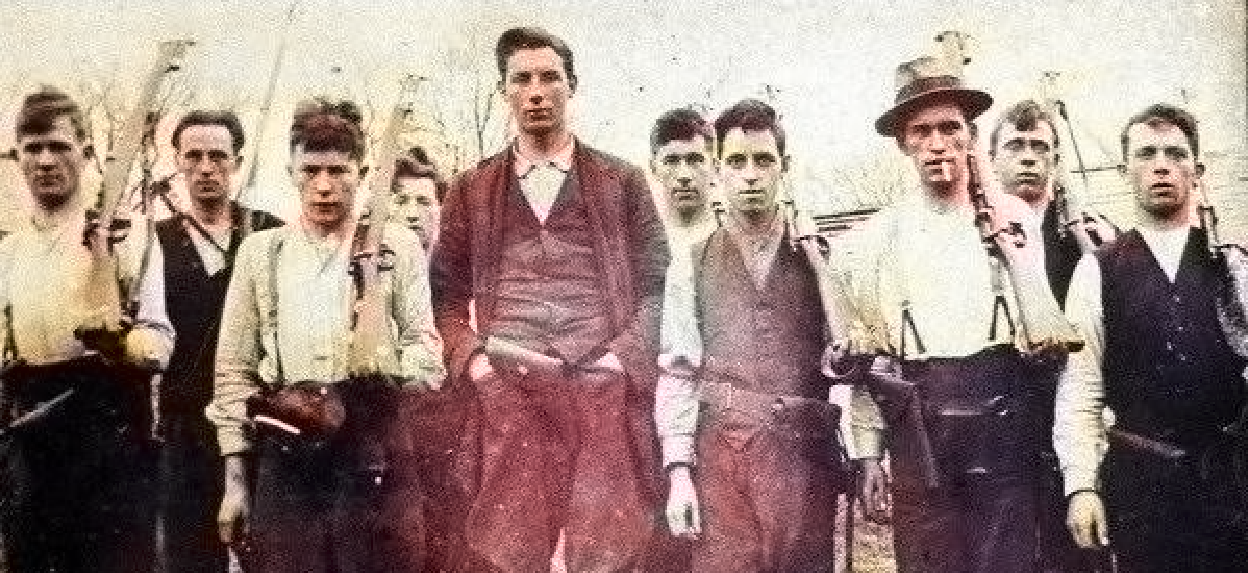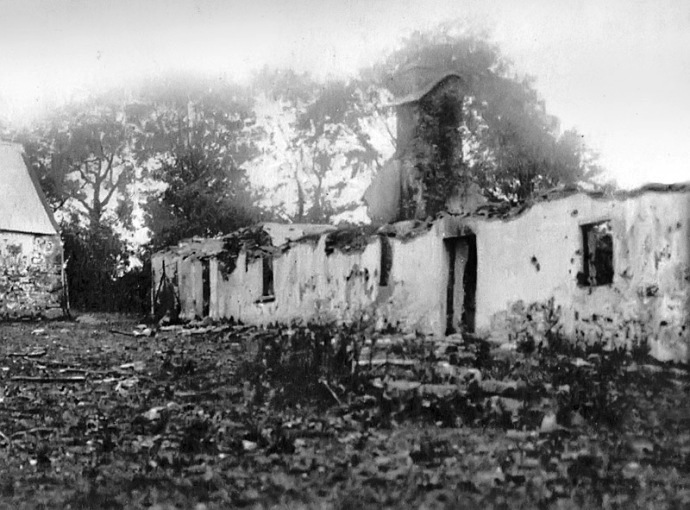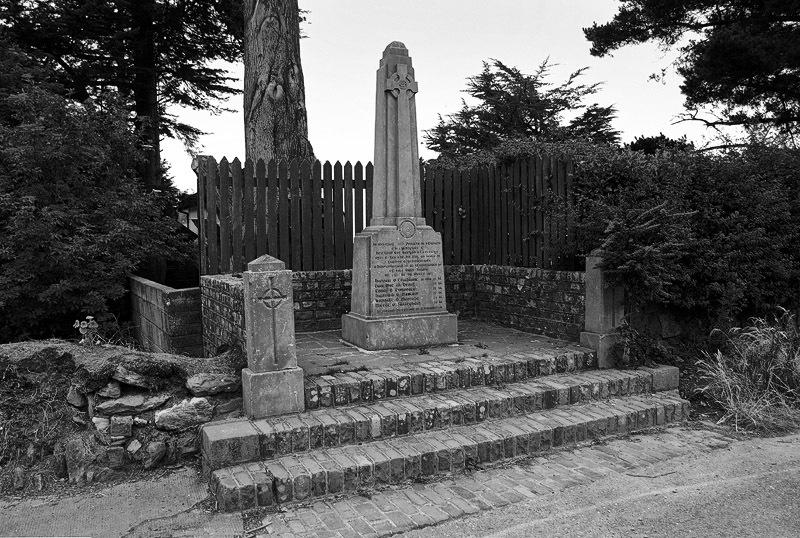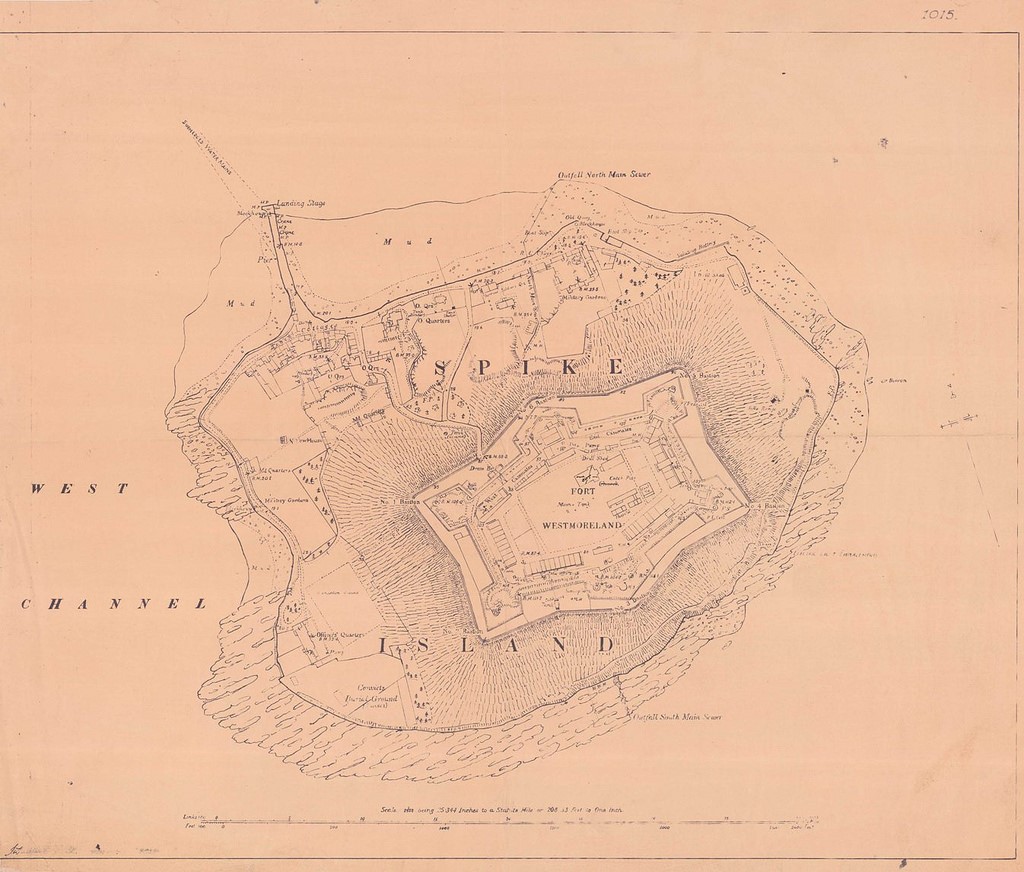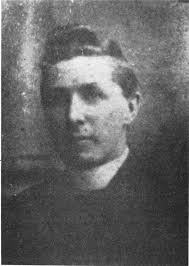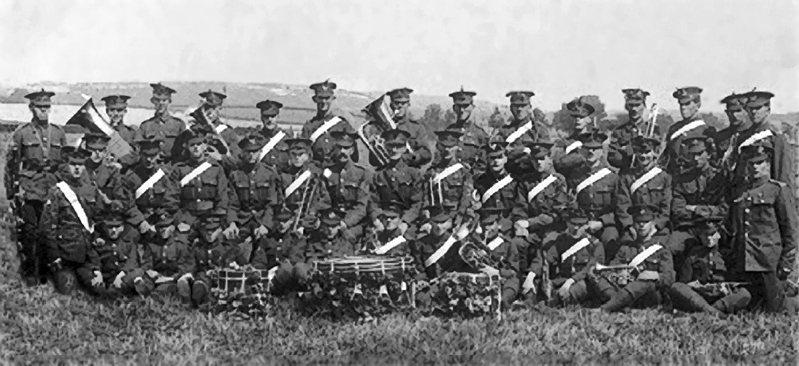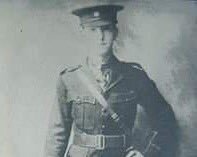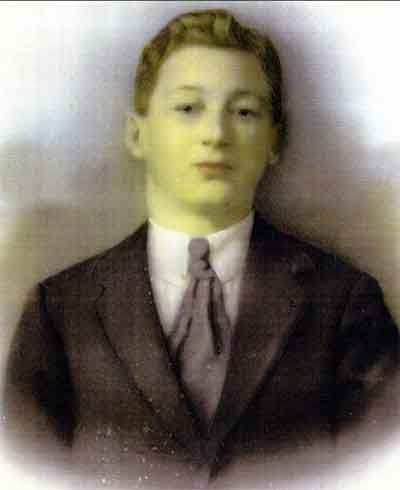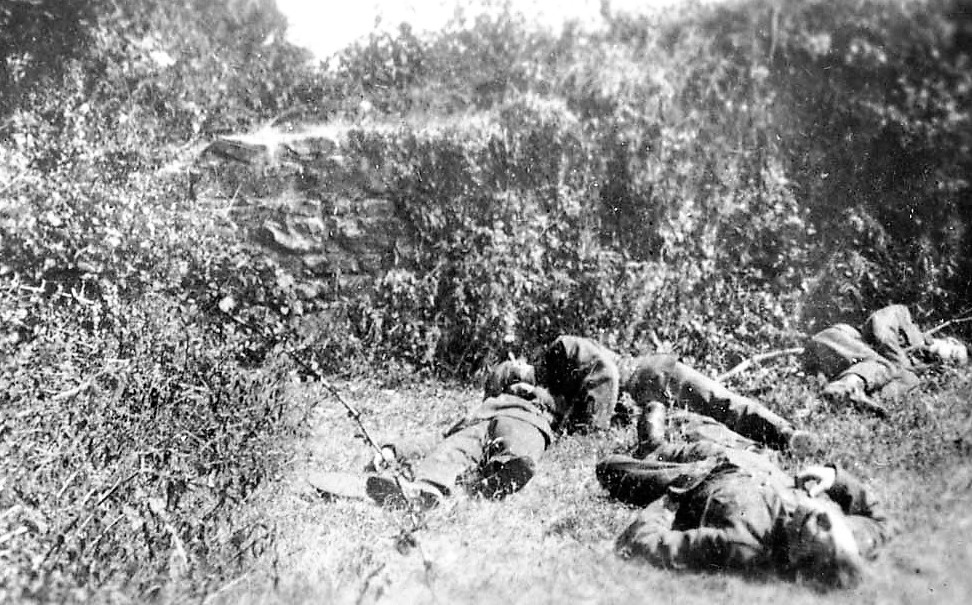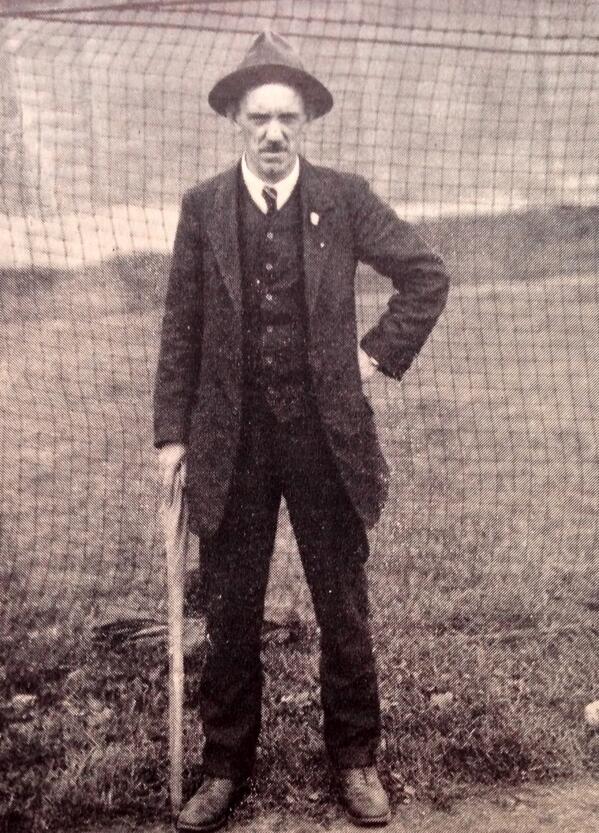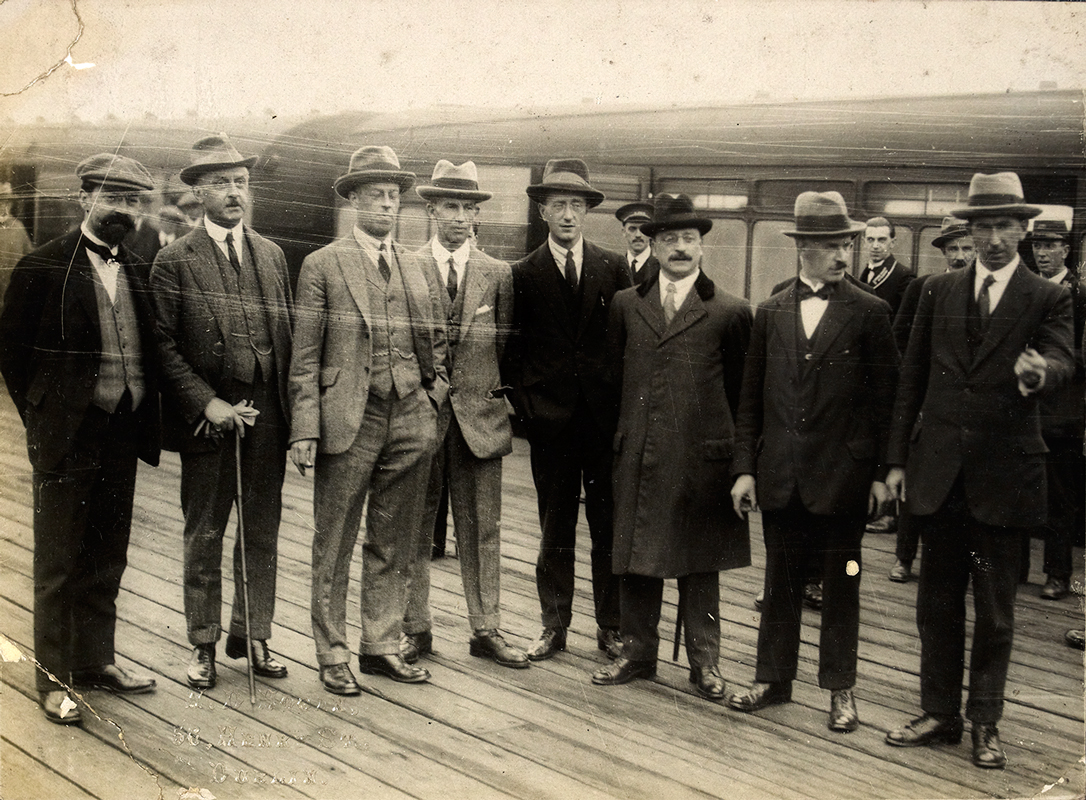1921
-
British Reprisals
Black and Tans
1 January 1921Following an attack on a patrol of RIC and Black-and-Tans in Midleton on 29 December, British forces retaliated on 1 January. The Military Governor ordered that specific houses in the vicinity were to be destroyed. These houses belonged to John O’Shea of Midleton, Paul McCarthy of Midleton, Edward Carey of Midleton, the Cotter and Donovan families of Ballyadam and Michael Dorgan of Ballygriffin. Midleton Garage and Engineering Works were also burned down, as well as shops in the town. There were no injuries during the operation. The British Military forces issues a statement which was published in The Cork Examiner.
Forty “Sinn Féiners” were arrested in Bantry. A soldier was accidentally shot dead during raids in Skibbereen. An RIC constable was shot and wounded in an incident in a pub on Princes Street.
Martial law had been declared in Cork city and county on 10 December 1920, and details of arrests under curfew were being published in the newspapers.
References
Cork Examiner 3 January 1921 -
The Clonmult Ambush
Flying column of Cork No. 2 Brigade
20 February 1921The greatest loss of life for the Irish Volunteers occurred when the intelligence officer of the Hampshire Regiment tracked the East Cork Flying Column to an abandoned farmhouse in Garrylaurence near the village of Clonmult, seven miles north of Midleton. What ensued has been described as “Kilmichael in reverse”. The column was attacked and besieged by a combined force of soldiers and R.I.C., with both sides suffering losses. On several occasions during the battle, the British called on the besieged men to surrender. The I.R.A. men were not going to give themselves up as their future prospects would have been very bleak as it was decreed that ‘Any unauthorised person found in possession of arms, ammunition or explosives would on conviction of a military court, suffer death’
The battle lasted several hours, after which 12 Volunteers had been killed at the farmhouse in Garrylaurence. Among the dead were Michael Desmond, James Glavin, Donal Dennehy, Richard Hegarty, Joseph Morrisey and Michael Hallihan. A number of survivors, as well as arms and ammunition, were captured. The incident respresented the single greatest loss of life for the IRA during the War of Independence. In the week that followed six alleged spies would be executed in County Cork by the IRA.
A group of armed and disguised men entered the Cork Union Workhouse. They identified an inmate named Michael Walsh (a 43-year-old former soldier) and ordered him to go outside, where he was shot to death. Attached to his clothing was a card bearing the words “Caught at last. Spies and informers beware – I.R.A.”.
Two farmers were shot dead near Skibbereen. A Cork native named George Tilson was found dead in Old Oak Common Station in London. His throat had been cut and a card was left at the scene bearing the words “Shadowed from Ireland.”
150 Irish prisoners were transferred to Spike Island.
References
O'Neill, Tom (2006) The battle of Clonmult : the IRA's worst defeat. Nonsuch Publishing: Dublin
Hart, Peter (1998) The I.R.A. and its enemies : violence and community in Cork, 1916-1923. Clarendon: Oxford
Cork Examiner, 21 February 1921The Clonmult Farmhouse
-
Six Volunteers killed at Clogheen
Clogheen Memorial
23 March 1921Six young Volunteers were killed following a raid on the house of Cornelius O’Keeffe at Ballycannon in Kerry Pike. Of the survivors, two escaped and one was arrested. The six men killed were Jeremiah Mullane, Daniel Murphy, Daniel Crowley, William Deasy, Michael Sullivan and Thomas Dennehy. It was reported in The Cork Examiner that the deaths took place in hand-to-hand combat, contrary to later reports, and that three of those killed were on the run. At this time there seemed to be a tit-for-tat game of killings and reprisals at play between the IRA and the British Forces, and the Clogheen massacre was just one of these incidents.
It is believed their position was betrayed by an informer. One such alleged informer, named Patrick “Cruxy” Connors, was tracked all the way to New York, and gunned down in Manhattan the following month.
On the same date the IRA attempted to rescue comrades from Cork Gaol. However, this attempt was unsuccessful and no escapes were made.
References
Cork Examiner, 24-25 March, 1921;
Hart, Peter (1998) The I.R.A. and its enemies : violence and community in Cork, 1916-1923. Clarendon: Oxford -
Spike Island Rescue
Map of Spike Island
30 April 1921Three Sinn Féin prisoners escaped from Spike Island. The prisoners were undergoing penal servitude in the camp, and they made their escape across the Harbour in a motorboat. The men involved were Sean MacSwiney (brother of the late Lord Mayor Terence MacSwiney), Thomas Malone and Cornelius Twomey.
In Carrigtwohill Michael O’Keeffe, a former soldier, was taken from his home and executed by IRA men. His body was found 200 yards away with a label attached to it, declaring him a spy.
Near Kildorrery in North Cork, two volunteers were killed in a clash with Crown forces. A survivor named Patrick Casey of Ballybricken in County Limerick, later appeared before a drumhead courtmartial in Victoria Barracks. He was executed on 2 May.
While fishing near Castlemartyr two RIC Constables were shot. On died at the scene, the other died later from his injuries. A unarmed youth named Joseph Cotter was shot dead near Liscarroll on the morning of 1 May.
References
Cork Examiner, 2-3 May 1921 -
The Murder of Father James O'Callaghan
Father James O'Callaghan
15 May 1921Fr. James O’Callaghan was shot on Sunday 15 May in the house of Liam De Róiste at Janemount in Sunday’s Well. Alderman De Róiste had recently been returned as a member of Parliament for Cork city. Father O’Callaghan was removed to the North Infirmary for treatment but died of his injuries later that evening.
The Cork Examiner reported that a group of armed and disguised men entered the house shortly before four o’clock in the morning. De Róiste, presumably the intended target of the raid, was not at home at the time. The priest, a native of Newcestown, occupied a flat in the residence, where he was shot. He was well-known in the city and was a scholar of the Irish language.
An RIC Sergeant was shot dead whilst out shopping in Midleton. Police attending the scene were also attacked, with two killed. An RIC constable was later shot dead in a public house in the town.
In Carrigtwohill three men, Michael Aherne, John Ryan and Richard Flynn, were taken from their homes by Crown forces and shot dead.
Constable John Kenna of the RIC was shot dead near Innishannon Barracks on 14 May. According to reports, up to 15 shots were fired at him.
References
Cork Examiner, 16 May 1921 -
Attack on 2nd Hampshire Regiment Band
2nd Hampshire Regiment Band
31 May 1921A roadmine exploded near Youghal, killing six British Army personnel, a number of them bandsmen of the 2nd Hampshire Regiment. A party of the regiment had left the barracks at 8 o’clock that morning to go to the rifle range. A priest was wounded and his driver was killed by shots fired in the aftermath. A 15-year–old boy who played in the band died the next day from his wounds.
The same day Colonel John Peacocke, and ex-Army officer, was killed at his house near Innishannon. While cutting wood in his workshop at Skevanish House, two men entered the building and fired several shots, hitting him in the stomach. He ran back into the house but died later from his wounds. The 32-year-old former Army officer was believed to have been a member of the Anti Sinn Féin Society and was strongly suspected by the IRA of being a spy.
In Cork, The court martial trial of Edward Carmody and John Lenihan (both of Listowel, County Kerry) concluded. Accused of the murder of District Inspector Tobias O’Sullivan, they were sentenced to death on 1 June.
The home of Major Charles Purdon Coote at Bearforest near Mallow was burned down by a group of around 12 men. The incident occurred at approximately four o’clock in the morning. The occupants were given 15 minutes to remove furniture and valuables before the house was set on fire.
References
Cork Examiner, 1-2 June 1921 -
The death of Commandant Leo Murphy
Leo Murphy
27 June 1921Leo Murphy, Commandant of No. 1 Battalion, Mid-Cork Brigade of the IRA, was wanted by the British authorities in relation to the deaths of a soldier (Captain Thompson of the 1st Battalion, Manchester Regiment) and an RIC man (Sergeant Bloxham). On the night of Monday 27 June, a party of soldiers travelled to Waterfall for the purpose of arresting Commandant Murphy.
They surrounded the house in which Murphy was staying. They removed him from the house, at which point was alleged he discarded a gun, a Mauser automatic. One hundred yards from the house, he was shot dead.
Forty-five arrests were made at the scene, at which point a large amount of material was captured which included two service rifles, two revolvers, an automatic weapon and significant store of ammunition.
The body of Private Frederick Crowther, 2nd Staffordshire Regiment, was found in a field three quarters of a mile from Mayfield. He had been shot, and there were several wounds on his body. He was found by a military search party.
References
Cork Examiner, 29 June 1921 -
The murder of Volunteer Denis J. Spriggs
Denis Spriggs
8 July 1921
In Cork city the I.R.A. received word that some members of the British forces were planning a series of reprisals in reaction to the announcement of the truce to end the War of Independence. A few hours after the truce was announced, the British military abducted and killed a twenty year old I.R.A. Volunteer named Denis Spriggs. Spriggs, who was a plasterer and slater by trade, was a member of C Company, 1st Battalion of the I.R.A.’s Cork No. 1 Brigade. Spriggs family home in Strawberry Hill was raided by the 2nd Battalion, South Staffordshire Regiment about midnight on 8 July. When the raid began, Spriggs was asleep in bed. Being unarmed, he surrendered and was taken into custody. However, he was later shot on Blarney Street and died of his wounds. It was alleged in the press that he attempted to escape from military custody. Second Lieutenant A. D’Ydewalle told the military inquest into the killing that ‘Spriggs then leaped out of the Crossley and started to run up Blarney Street. The escort on the Crossley opened fire and he fell...apparently dead when picked up. I personally warned him that he would be shot if he attempted escape’.
Given the circumstances of Denis Spriggs’ arrest, the track record of the British officer involved and the explanation proffered for the killing, it is likely that Spriggs was summarily executed by the British military because of his republican activities and not because of any resistance or attempt to escape on his part. It is impossible to establish without further information to what extent, if any, the announcement of the truce motivated Spriggs’ killers, whom some of those angered by the announcement of the ceasefire sought opportunities for vengeance, or a final chance to confront the enemy in battle.
The same night, a Cork-bound train was attacked at Clondalkin with bombs, petrol and machine guns. One person, a civilian was killed and many more were wounded. Soldiers on the train were the targets of the ambush.
A number of civilians were shot and wounded in Cork city in the days leading up to the truce. In Mallow, an ex-soldier named MacPherson was taken from his bed and shot dead. In Macroom on 10 July a man named John Foley was shot by the military at his house in Leemount, Coachford.
References
Cork Examiner, 11 July 1921
Ó Ruairc, Pádraig Óg (2016) Truce : murder, myth and the last days of the Irish War of Independence. Mercier Press: Cork -
British soldiers executed on eve of truce
British soldiers found in field in Cork
10 July 1921The truce came into effect at 12 noon on Monday, 11 July 1921. The previous day four soldiers were kidnapped near the County Gaol. They were found the following morning in a field near Togher, blindfolded and shot dead.
On the night of the 10 July 1921, four British soldiers (Corporal Harold Daker, Private Henry Morris, Private Alfred Camm and Private Albert Powell) were abducted by an IRA unit in Cork.
Word soon reached Connie Neenan, an IRA officer in the 2nd Battalion, Cork City Brigade that four soldiers had been abducted and were facing execution. Neenan and a small group of his comrades set out in search of the soldiers in the hope of securing their release:
‘I gathered a group and we searched the fields from here (Croghtamore Square), to Togher. Around 2am we met some of our lads who told us the news was bad. I was astounded. Surely no one would shoot anybody at a time like this? I crept into a house, exhausted and filled with remorse. We could not sleep. We just hung out there until noon the next day. The Truce had come.’
The following morning, just two hours before the ceasefire began, the bodies of the four soldiers were found in Ellis’ Quarry on the outskirts of Cork. Each soldier had been blindfolded and shot through the head. A British soldier photographed the bodies in situ and the killings soon featured in anti-Republican propaganda produced by the British military and the Free State.
An RIC Constable named Clarke was shot dead in Skibbereen. Edward Swanton, a magistrate from Skibbereen, was kidnapped at Tragumna by a group of armed men.
Truce terms were published on 11 July 1921. The curfew in Cork was suspended. All hostilities ceased. An Irish delegation, led by Eamon de Valera, prepared to travel to London to meet David Lloyd George.
References
Cork Examiner, 9-12 July 1921
Ó Ruairc, Pádraig Óg (2016) Truce : murder, myth and the last days of the Irish War of Independence. Mercier Press: Cork
Henchion, Richard (2003) The land of the finest drop : the story of life, love and labour in the districts of the Lough, Togher, Pouladuff, Friars Walk and Ballyphehane over a period of 400 years. Dahadore Publications: Cork -
The Death of Tadhg Barry
Tadhg Barry
15 November 1921Tadhg Barry, a socialist, republican and trade union activist from Blarney Street in Cork, was shot at Ballykinlar Camp in County Down, where he had been imprisoned for several months. He was killed by an eighteen-year-old sentry named Barrett for a reason that was not readily apparent. He was a well-known individual in Cork City and County. There were immediate calls for a full investigation.
His body was returned to Cork for burial. Several politicians accompanied him on the journey, including Cork Lord Mayor Donal O’Callaghan, Liam De Róiste and J.J. Walsh. Shops and businesses closed, and flags were lowered to half-mast. Following a service in the North cathedral, his remains were interred at the Republican Plot in Saint Finbarr’s Cemetery. There were processions in Dublin and Cork, and in Cork many thousands of people lined the streets along the route to the graveyard.
A military inquiry held shortly after the death of Barry issued no findings, and the jury at the coroner’s inquest, which concluded on 14 December, could not agree a verdict. By this time the Treaty had been signed, and the other internees at Ballykinlar Camp had been released.
References
Cork Examiner 16-21 November 1921;
Ó Drisceoil, Donal (2011) Tadhg Barry(1880-1921); The Story of an Irish Revolutionary. Trade Union Labour: Cork -
Anglo-Irish Treaty Signed
Irish delegation
6 December 1921The Treaty between Britain and Ireland was signed on 6 December 1921. Ireland would henceforth be known as the Irish Free State. Northern Ireland was given the option to opt-out of the Free State and remain part of Britain.
Michael Collins and members of the Irish delegation received a great welcome on their return to Dublin. The initial response in Cork was one of relief and joy. In the days that followed internees were released from camps around the country.
After much debate, the Anglo-Irish Treaty was ratified in the Dáil on 7 January 1922. However it had served to polarise the Sinn Féin party, which split into Pro-Treaty and Anti-Treaty factions, setting the scene for the Irish Civil War.
References
Cork Examiner, 7-8 December 1921

